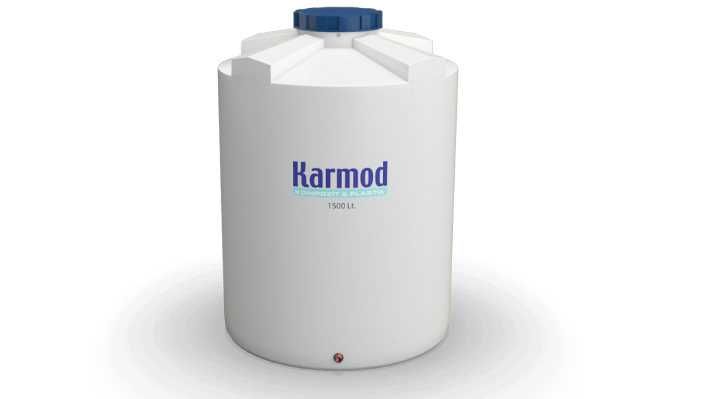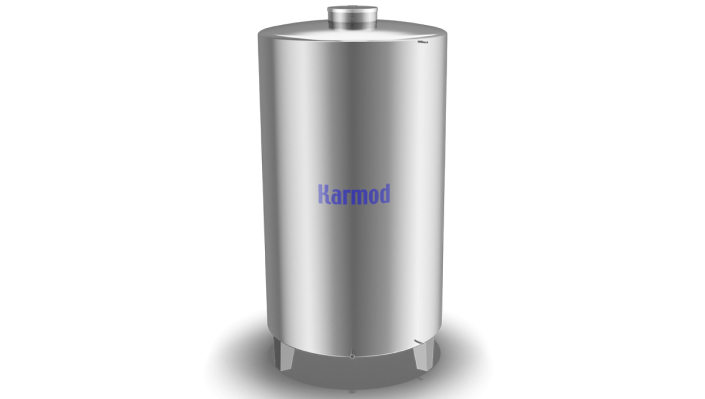Certain tanks have gained popularity, especially for rural use. In rural areas, water tank models are widely used for rainwater collection systems, safeguarding one of our most vital resources. Rainwater harvested in these systems can be stored and preserved as harmless and fresh water. This aspect of freshness is sought after not only for water but also for various food products by consumers.

A water tank serves the purpose of storing and safeguarding its content, whether it be chemicals or food, and allows for transportation if required, followed by discharge for use when needed.
Water itself does not deteriorate, but its quality can be affected by external factors, leading to either a decrease or increase in quality. The primary goal of a tank is to preserve the content within it, including water, which, upon reaching the soil, can combine with minerals present in the soil. While many of these minerals are beneficial, some combinations may contaminate the water and make it unsafe.
Rainwater harvesting systems, such as these tanks, enable us to store water in a fresh and safe manner. However, maintaining the freshness and cleanliness of the stored water requires conscious effort on our part. By following the steps below, you can keep the content fresh and clean:
1.Keep your tank consistently clean.
For the content to remain clean, all surfaces it encounters within the tank must also be clean. Some sources recommend cleaning tanks every six months, while in cases of sensitive food storage, cleaning after each use is advised. Regular cleaning ensures that no foul odors develop within the tank and creates a sterile environment for the stored content.
When cleaning, it is crucial to choose the right cleaning agent. The cleaner used should not contain heavy chemicals or strong scents that could damage the tank. A gentle water pressure and non-harmful cleaning agents will suffice for tank maintenance.
2.Choose a tank suitable for your content.
Selecting the right tank can be challenging in some situations. For food storage, lightweight and food-safe polyethylene tanks are commonly used, while polyester tanks are preferred for storing chemical substances.
Tanks are produced using three different raw materials: polyethylene, polyester, and stainless steel. These materials have been chosen through Research & Development (R&D) studies, ensuring that they have no adverse effects on the stored content. Unlike some other materials used by other manufacturers, these three raw materials do not interact with the content. For example, when water is left in a container made of iron, a metallic taste may develop, indicating that iron has mixed with the water. Understanding tanks requires a deeper analysis, but there are common features shared by all tanks. All storage products are covered by a two-year warranty against manufacturing defects. Additionally, all tanks can be repaired at the production facilities. Furthermore, tanks can be produced in any desired color, making it easier to categorize and identify the different contents stored in them.
Polyethylene Water Tank Features
Polyethylene tanks are suitable for food storage and have gained international recognition for their suitability. As a result, many products that encounter food are made from polyethylene as their raw material. To ensure complete suitability, the tank's lids are also made of polyethylene. The sleeve section, on the other hand, contains a brass sleeve that can accommodate almost any faucet.
Polyethylene tanks are produced using a different method than others. These tanks are manufactured as monoblock units. "Mono" means one, while "block" is used to refer to a single piece. Quite literally, these tanks are produced by pouring polyethylene into molds and extracting them as a single unit. This production method not only makes cleaning easier but also keeps the prices quite affordable. In fact, they are the most cost-effective tanks among all storage options. Another feature of the polyethylene material is its UV stabilization, which prevents harmful rays from entering the tank. Consequently, the formation of algae within the tank is prevented. The working temperature range is also quite ideal, with the tank being able to withstand temperatures as high as +50 degrees Celsius.
Polyester Water Tank Features
Polyester tanks, on the other hand, are popular for their chemical resistance, making them highly sought after in the manufacturing industry. Their high chemical resistance is achieved with isophthalic and epoxy-based vinyl ester resin. These tanks are made using fiberglass and polyester resin. The main material obtained by combining these raw materials is then further joined using special adhesives. This allows these tanks to be produced in large sizes and offers the advantage of on-site assembly. The working temperature range for polyester tanks is up to +60 degrees Celsius. Thanks to these tanks, transporting the content is quite easy. Like other tanks, polyester tanks are also UV stabilized, preventing harmful rays from passing through.
Stainless Steel Water Tank Features
Tanks made from stainless steel are known as the most robust storage options. The main reason for their strength lies in the hardness and insulation properties of steel. Due to its insulating properties, harmful rays cannot penetrate the tank. Its hardness also ensures that it is not easily punctured or cracked.
These tanks are made from a combination of steel and chromium, the main material obtained. This material is then joined according to the tank's design using argon welding. This is why these tanks also offer the option of on-site assembly, much like polyester tanks. Since very large tonnage tanks can be produced, they often come with ladder support to allow access to the lid section.
Another significant feature of these tanks is their working temperature range, which allows stainless steel tanks to operate up to +80 degrees Celsius. This temperature range is closest to the boiling point. Thanks to this advantage, these tanks can store a wide range of contents, from pharmaceuticals to various chemicals and food products.

In this article, we have discussed how to keep the content fresh and clean. If you are interested in owning a tank or need more information, you can consult our customer representatives.


 EN
EN
 DE
DE
 FR
FR
 IT
IT
 ES
ES
 PT
PT
 RU
RU
 AR
AR
 BG
BG
 SR
SR
 GR
GR
 SQ
SQ
 RO
RO
 PL
PL
 HU
HU
 CZ
CZ
 HR
HR
 AZ
AZ
 GE
GE
 AM
AM
 IL
IL